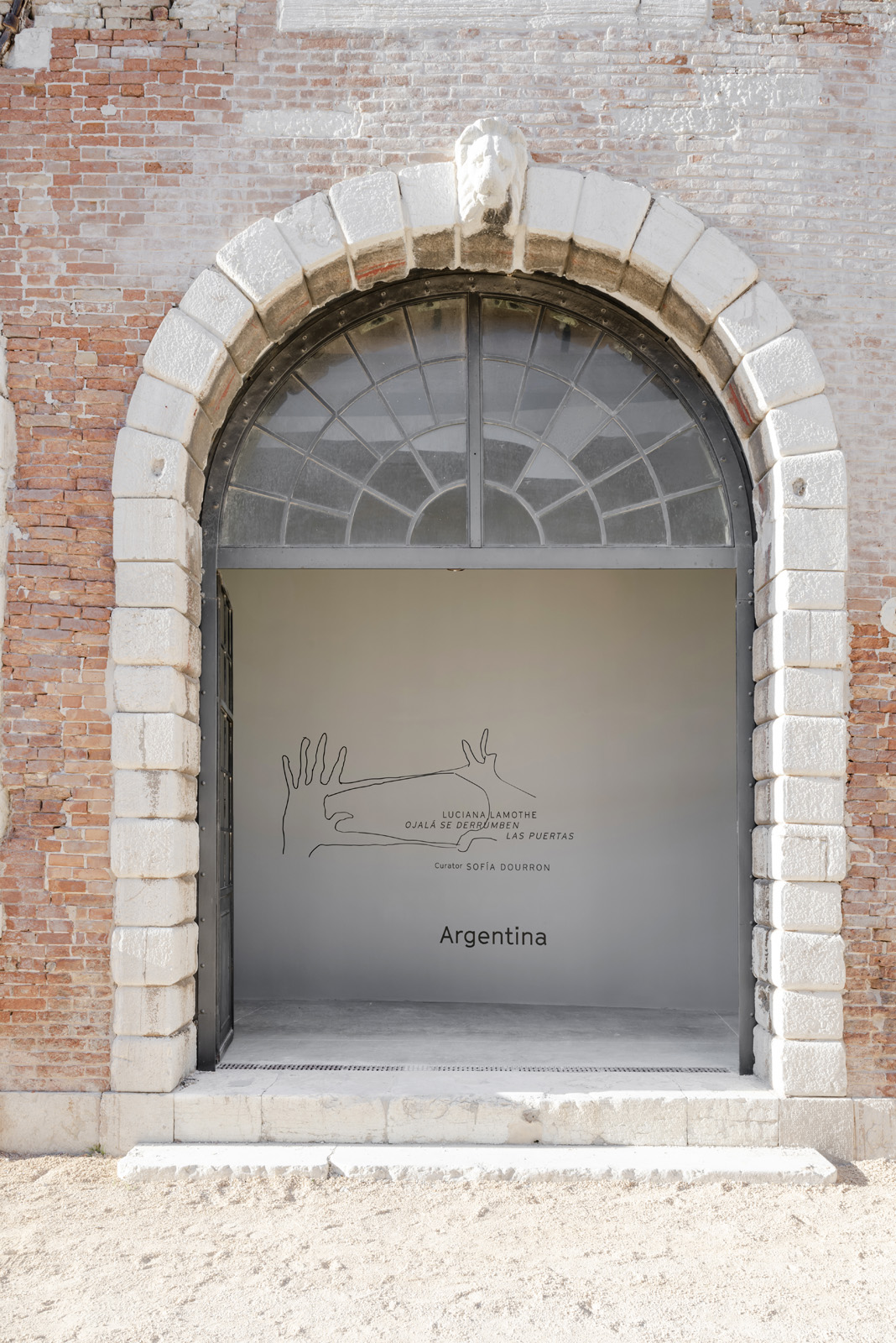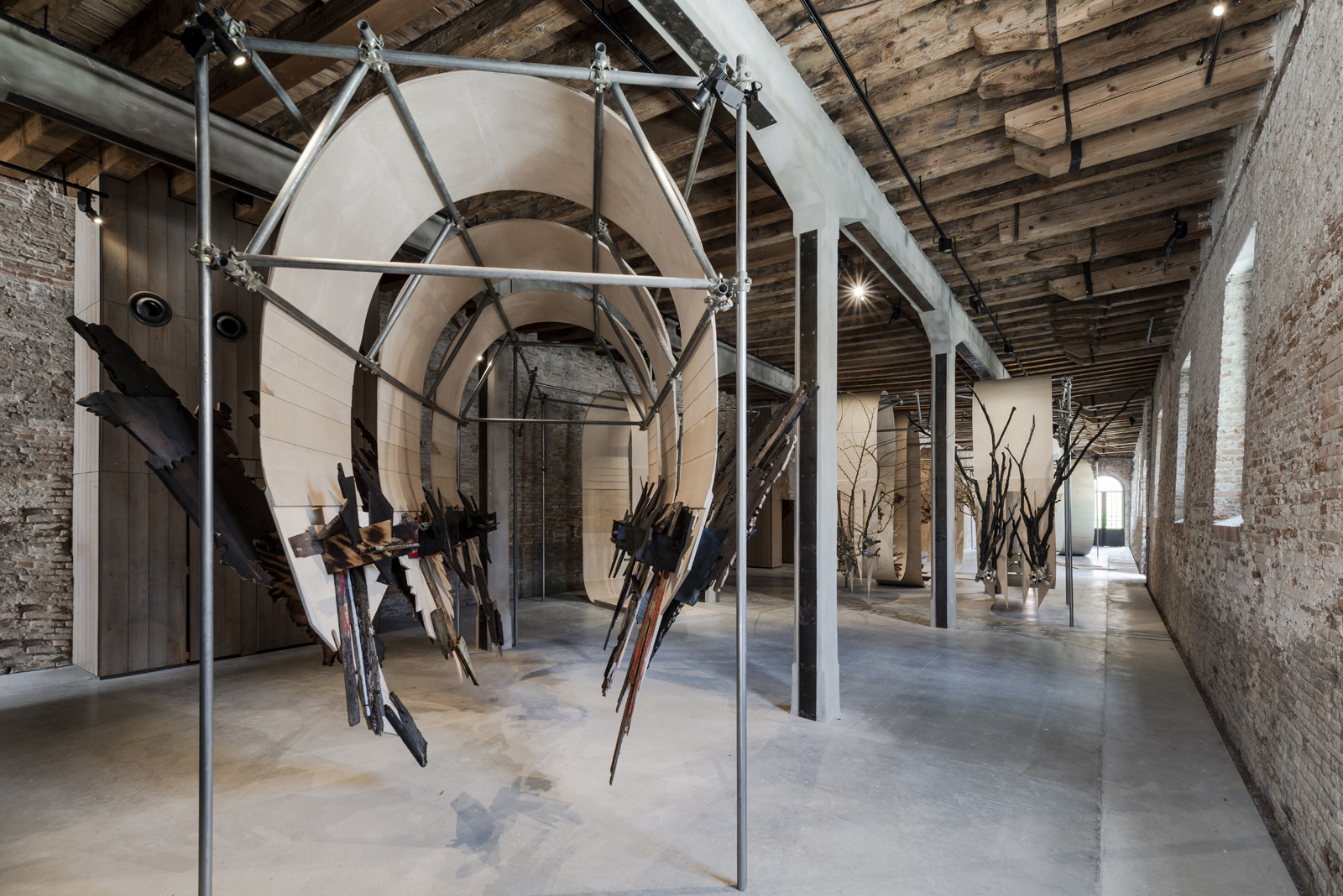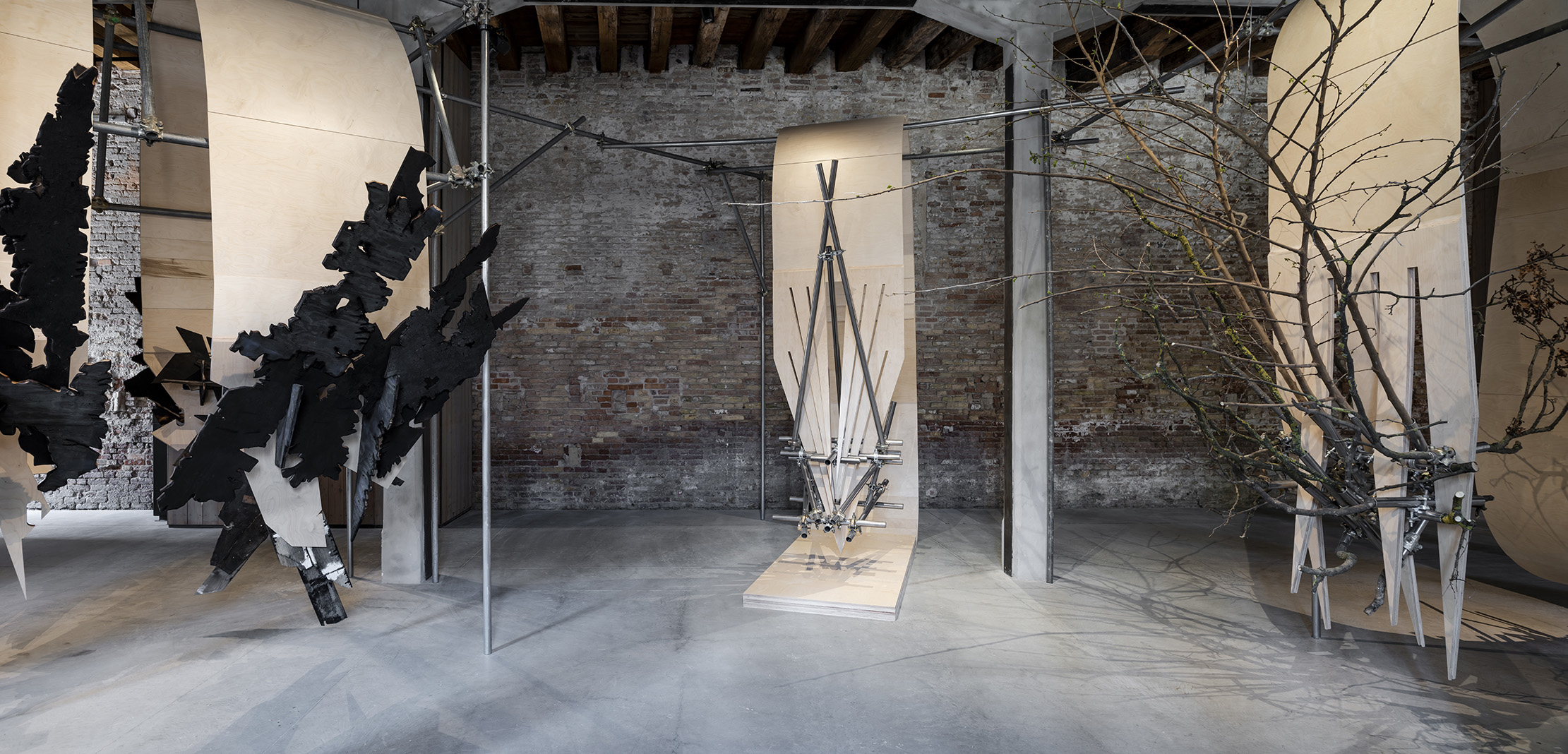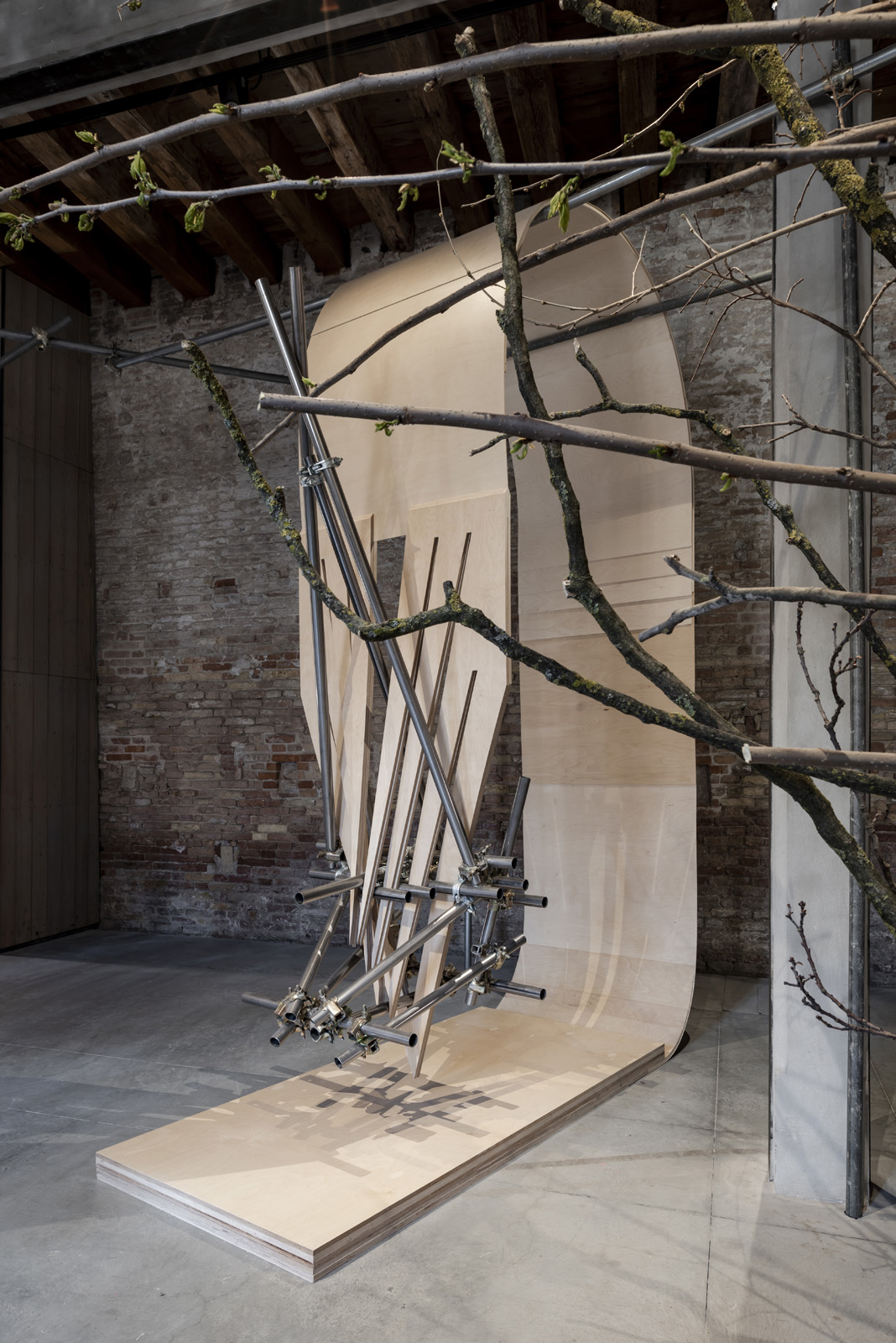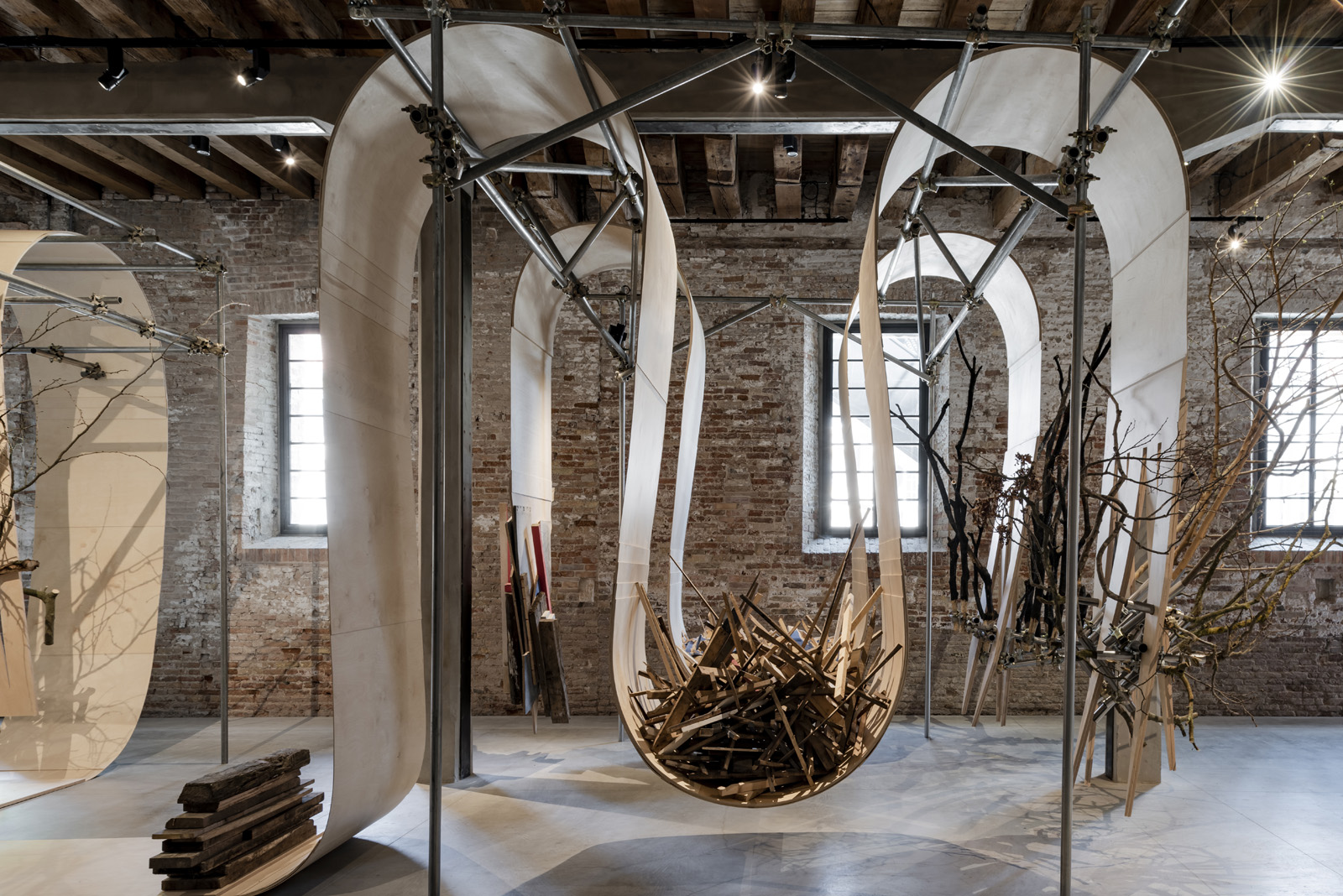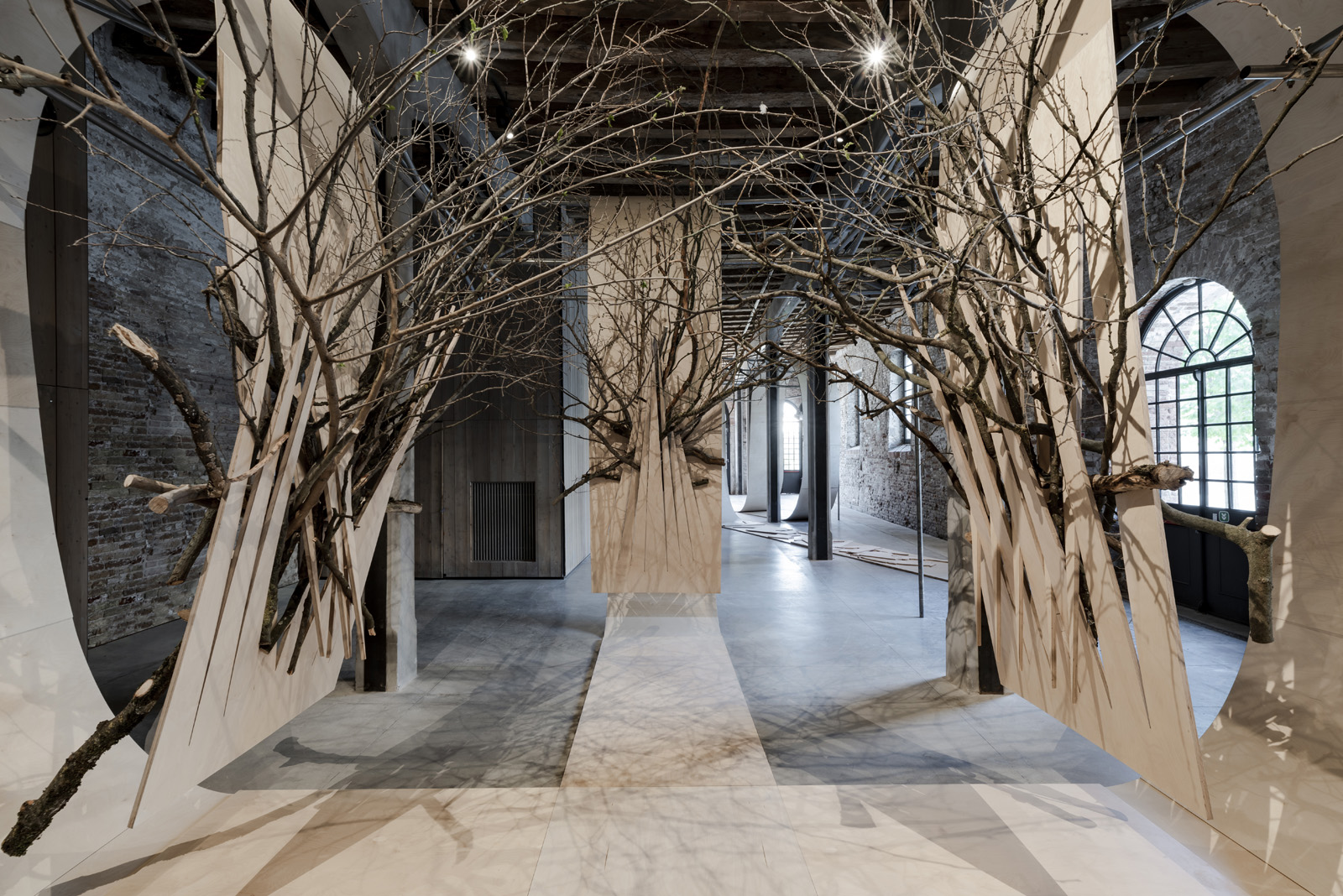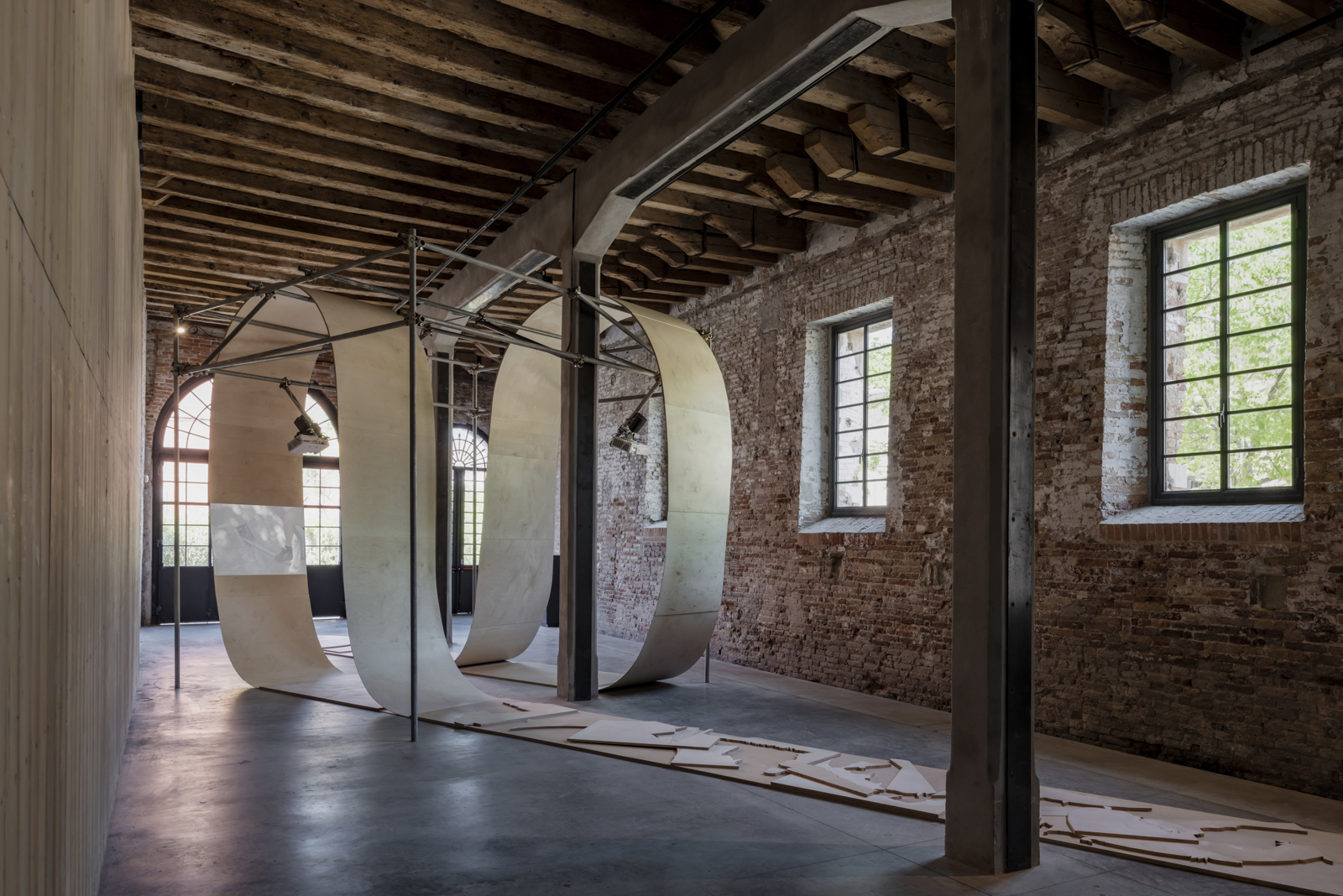Argentina Pavilion at the 60th Venice Biennale
Ojalá se derrumben las puertas [Hope the Doors Collapse], the exhibition and book forming Argentina’s participation in the 60 Mostra Internazionale d’Arte – La Biennale di Venezia and presenting the work of Luciana Lamothe, inhabits the (visible and invisible) borders that separate the human from the non-human, the natural from the constructed, the known from the unknown. In this new work, Lamothe interlaces pieces of wood and pipes, bodies and structures, mutability and permanence, to create spaces within spaces that modulate forms of violence and hospitality in a tense equilibrium of interdependent forms.
The four sculptures that make up the work address objects (human, infrastructural, industrial and ‘natural’), their latent potentials and the spatial field in which they exist in order to test alternatives to their familiar forms of interaction. To do this, she offers us a specific set of tools and perspectives that allow us to observe, represent and analyse our constructed environment and the structures humans have designed or occupied over time. Her systems of scaffolding and phenolic plywood infiltrate architecture and infrastructural forms to reveal the layers of techno-textures, information, history and relations that make up their quasi-industrial, quasi-natural bodies. By displaying the dismantled innards of our constructions and recomposing them in new, unexpected spatial formulations, Ojalá se derrumben las puertas insists on the possibility of effecting changes to our constructed environment and so also to the webs of relations and interactions that shape the world.
Constructed entirely in the pavilion, the structures manipulate iron scaffolding and plywood boards into curves and counter-curves and, in their interstices, house a series of objects embodying different stages in the life of wood: from its origin, through its extraction as a commodified resource and its industrialization, to its disposal as organic or industrial waste. Itbrings together industrial materials and others collected from nearby areas, such as local workshops and a small forest in Slovenia. It also reutilizes materials gathered during the dismantling of the last Architecture Biennial, from the Argentina Pavilion itself, but also from others such as the Nordic and German pavilions, the latter reutilized materials from previous pavilions as well. As a consequence, the work nests within it a series of production, disposal and reproduction processes in constant motion. This approach to materials, which Lamothe calls ‘monomateriality’, forces us to pay unusual attention both to the structures and the materials and to experience them as part of a supportive system of interconnected subsistences and to to establish a sensual, affective relationship with materials.
Ph: Matteo Losurdo
